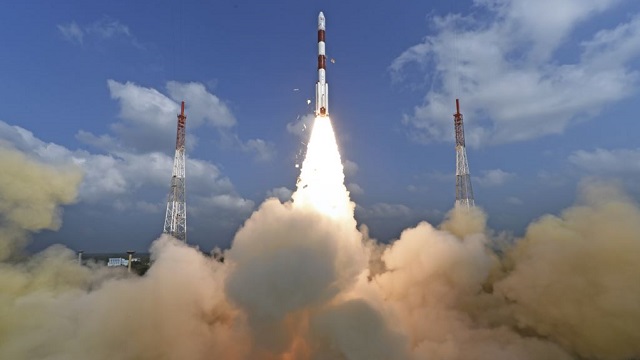Sriharikota (Andhra Pradesh): India Saturday successfully placed into orbit one more eye in the sky — a radar imaging earth observation satellite EOS-01 (formerly RISAT-2BR2) — and nine other foreign satellites in a text book style.
India’s new earth observation satellite up in the sky will send good clarity images which will be used for agriculture, forestry and disaster management support, said Indian Space Research Organisation (ISRO), the country’s space agency.
The images captured by the satellite will also be used for surveillance purposes while ISRO is silent on this aspect.
The EOS-01 with synthetic aperture radar (SAR) can shoot pictures in all weather conditions.
The satellite can take pictures day and night and will be useful for surveillance as well as civilian activities.
At 3.12 p.m the PSLV-C49 rocket, with lift off weight of 259 ton and standing around 44.4 metres tall with a one-way ticket hurtled itself towards the skies ferrying the EOS-01, which is is a 630 kg earth observation satellite.
Piggybacking on that were the nine foreign satellites from: Lithuania (1-R2, technology demonstrator), Luxembourg (4 maritime application satellites by Kleos Space) and the US (4-Lemur multi mission remote sensing satellites).
With the fierce orange flame at its tail, the rocket slowly gathered speed and went up while the rocket’s engine noise like a rolling thunder adding to the thrill.
At 3.31 p.m. the rocket ejected EOS-01, followed by the nine other foreign satellites.
Cumulatively till date ISRO has put into orbit 328 foreign satellites all for a fee.
The PSLV in normal configuration is a four stage/engine expendable rocket powered by solid and liquid fuels alternatively with six booster motors strapped on to the first stage to give higher thrust during the initial flight moments.
But the 44.4 metre tall PSLV rocket that flew on Saturday was the DL variant having only two strap-booster motors.
This rocket variant was used the first time to put the Microsat R satellite into orbit on January 24, 2019.
The Indian space agency has PSLV variants with two and four strap-on motors, larger PSLV-XL and the Core Alone variant without any strap-on motors.
The choice of the rocket to be used for a mission depends on the weight of the satellite and the orbit where the satellite has to be orbited.
IANS







































